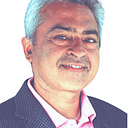Driving Practical Change in Organizations Through Understanding Complex Systems
In the last couple of decades, we have continued to experience the onslaught of many global problems. There are always two sides to these kinds of problems. On one side is the problem itself, and on the other, the opportunity it represents in spurring reality toward a more progressive equilibrium.
Hence, the Dot-Com bust of the early 2000s, the increase in tsunamis and other Climate Change impacts, the Enron scandal, SAARS, the 2008 financial crisis, the Arab Spring, COVID, and the Ukraine-Russian war, to mention a few, can be seen as situations that drive us into a state of being far-from-equilibrium. From a complex systems theory perspective, it is such states, amongst others such as non-linearity, bifurcation, paradox, and emergence, that when recognized as being properties of a “system” — one global system that is always seeking its continued resilience and adaptability — can be managed differently to support the system urge toward a greater, organic, and cohesive expression of complexity.
But even when problematic circumstances are viewed locally, in smaller spheres such as business or social organizations, or various kinds of communities, an understanding of complexity will enable making more useful change.
There are several interpretations of complex systems and corresponding practical approaches to drive change based on these. I will be facilitating a course, Driving Practical Change in Organizations Through Understanding Complex Systems, as an offering by International Center of Integral Studies (ICIS). This course is part of an All Life is Yoga Program by the newly formed Sri Aurobindo Integral Education Network (SAIEN).
The course will be structured as an online asynchronous self-study course primarily focused on a series of complex systems articles I have written for Forbes over the last few years. The articles provide directional suggestions, but being a self-study course, the expectation is that participants do apply these and similar suggestions to begin to see how change may be architected differently in their unique spheres of life.
Here is an adapted presentation, based on one that I recently gave at a conference, that weaves together aspects of systems thinking, emotional intelligence, simulations, structural powers or powers within that architect different types of emergence, insight into and leveraging of light, and mathematical modeling, to suggest an approach to building an enterprise of the future:
The Forbes articles cover similar areas as in the presentation and are based on actual work done through the years.
